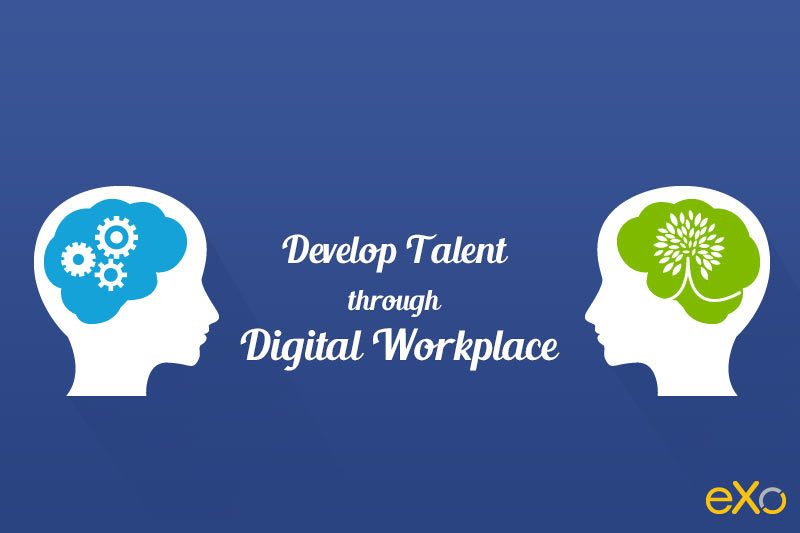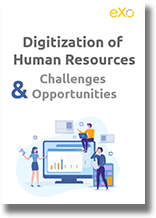- Veronika Mazour
- June 23, 2016
The Importance of Employee Training and Development in HR Management

Content
1. Training programs boost employee satisfaction and improve employee retention
Employees appreciate being able to build new skills, improve their job performance and potentially evolve towards more challenging roles. It is interesting to note that ongoing education is valued by employees from all age groups as key to staying relevant in the job market.
Even more importantly, supporting and providing ongoing training opportunities show a company’s commitment to its employees’ growth. Employees feel their value to a company where employee education is promoted.
Finally, ongoing training opportunities can be publicized since they are an important perk in a company’s compensation programs. However, and unlike many other perks, ongoing education can cost very little.
You may also like:
2. Developing talent is the best and cheapest way to staff
From the HR perspective, developing talent is the best way to staff a company’s roles.
First, it is always cheaper to source skills internally. The more junior the position, the lower the recruiting costs, so hiring from more junior positions within the company automatically lowers the overall recruiting costs for the position, even after accounting for the replacement of the junior position.
Second, it is usually simpler and quicker to bring an internal hire up to speed – as the newbie already knows everything there is to know about the company. There are no precise statistics on the subject, but the idea that homegrown executives on average perform better than external hires is firmly shared by most managers. Offering financial support options such as private student loans can also be a great incentive to attract and retain talented employees looking to further their education.
Finally, promoting internal mobility through training leads to a more engaged and loyal workforce. While new blood remains necessary, ideally it should not represent the majority of the staff.
Overall, developing talent to staff ever-changing company needs is such a holistic circle that volumes have been written on the subject of employee training. Introducing learning opportunities through a digital workplace will maximize the value of all of your training programs.
tools and information
3. Develop a culture of teaching and learning
One of the greatest ways to study is to learn from peers and managers. Unfortunately, that is also the most complicated learning method to establish throughout the company. Many young people want to get an education that will allow them to find a job from sites like Bazar, and become sought-after employees in the world’s leading companies. However, it is not enough to engage a training consultant to provide a couple of one-off courses.
The kind of culture where managers want to develop their team members and are valued for that effort, and where all employees are encouraged to learn new skills and share them, is not easy to create. And, as with all other corporate initiatives, the company internet is a great tool to promote this culture and elicit the desired behaviors.
4. Learning by collaborating and interacting with peers
Digital workplaces provide ways for employees to collaborate on work projects and interact with each other regardless of their location.
Social collaboration tools help in searching for answers, sourcing skills and experience, and interacting with peers throughout the company.
5. Create, maintain and enrich the company knowledge base
Perhaps the greatest benefit of a digital workplace for employee training lies in its knowledge management capabilities.
Training materials, like documents, presentations and recorded training sessions, can be stored in a dedicated workspace in your company intranet, making them accessible to immediate search, access and use by employees.
More importantly, in the same manner, the company’s knowledge can be encapsulated in documents, forums, wiki pages, blogs and conversations, and then stored in a searchable database that an employee can access and learn from as needed.

FREE WHITE PAPER
6. Communication tools for coaching opportunities
7. Detect training needs
A company intranet will allow you to survey employees and managers and identify the gaps in employee skills by asking employees to take assessment tests, video interview using video interviewing tools and questionnaires.
For example, if all your employees need basic Excel skills, the easiest way to identify the gap between the reality and the expectation is to conduct an anonymous self-assessment (or an assessment using assessment tool, chosen based on reviews and ratings from aggregator sites like Find HR Software, and tests by team leaders) and consolidate the results at department level.

FREE WHITE PAPER
Types of Digital workplace solutions
The modern workplace has evolved significantly in recent years, with advancements in technology, the growing number of tools …
FAQs
What is an intranet?
intranet is a term used with abundance whenever the subject of internal communication and collaboration is brought up which makes defining it a bit challenging. In its simplest form, an intranet is an internal website for your organization. It is used mainly for top-down communication where employees can access corporate news, policies and announcements.
What are the different types of intranet solutions?
To gather a thorough understanding of intranets and their different types, let’s walk through its history from the early days up to now:
- Intranet Portals
- Enterprise Social Netwrok (ESN)
- Intranet 2.0
What is the difference between intranets and extranets?
The main difference between intranets and extranets lays in the target audience. Intranets typically target users from a specific organization whereas extranets is the hub that can group users from multiple external organizations ranging from partners and suppliers all the way to clients
➝ Discover the real difference between intranet and extranet
What are the benefits of intranet solutions?
Different types of Intranet solutions from the early days up to the intranet 2.0 (commonly referred to as digital workplace solutions) bring a host of benefits to businesses of all sizes and industries. Below is a list of benefits often associated with intranets:
- Streamline internal communications
- Connect employees and eliminate silos
- Foster collaboration
- Improve knowledge sharing
- Recognize and reward employees
What are the different strategies for a successful intranet adoption?
Here are three different strategies for a successful intranet adoption:
- User focus strategy
- Global community management strategy
- Private communities focus strategy
Related posts
- All
- eXo
- Digital workplace
- Employee engagement
- Open source
- Future of work
- Internal communication
- Collaboration
- News
- intranet
- workplace
- Knowledge management
- Employee experience
- Employee productivity
- onboarding
- Employee recognition
- Change management
- Cartoon
- Digital transformation
- Infographic
- Remote work
- Industry trends
- Product News
- Thought leadership
- Tips & Tricks
- Tutorial
- Uncategorized
Leave a Reply
( Your e-mail address will not be published)



ITS NICE TOPIC BUT ALSO I WOULD LIKE TO KNOW WHICH KIND OF TOPIC MUST BE TOUGTH TO EMPOLOYEES AS HR
Hi Veronika,
Great post.
I agree with you that employee training and development is key for any business. The employees are a company’s biggest asset since they get the required work done so that an organization can meet its business objectives.
Effective training designed specifically for an organization can provide the employees with essential next-generation skills while bringing with it a host of business benefits such as support succession planning, increase employee value, reduce attrition rate, boost operational efficiency and so on.
Since training your employees in industry-standard best practices could also assist you in building your reputation and will set your business apart from the rest, it is important for organizations to choose a tool that is capable of supporting the specific needs.
If you are looking for an LMS platform, you can check out cloud-based ProProfs Training Maker that will let you create courses, as one-off sessions or a series of modules, designed to complement each other. The students (or employees) enrolled in a course can access the content anywhere by logging into their accounts from the desktop or mobile devices. My employer was spending a huge amount on onboarding 4,800+ new hires a year. After ProProfs Training Maker was implemented, training new employees and supporting existing employee’s learning needs became reality.
Great post, i like the info you share. It has great details and yet it is easy to understand. That’s what i was looking for. I will definitely share it with others.
Great article …Thanks for your great information.
thank you
what the relationship between training and development and competitive advantages.
http://www.ju.edu.jo
Great post shared with us
Nice blog, very interesting to read
I really like your point about how employees appreciate being able to learn new skills on the job. If I were a young, up-and-coming artist in a design firm, I’d definitely choose to stay longer in a company that encourages me to grow by providing free and accessible training programs for their employees. Thanks for this really informative article about employee development programs!
I really like your point about how managers can determine their employees’ training needs by employing an anonymous self-assessment test. If I were to manage a team of employees, I’d definitely want to be proactive in the development of their skills. As you said, it will be always cheaper and easier to source skills internally. I would think that regular employee training opportunities will really help the company itself in the long run.
Very Nice Blog. Its really good to read. Thank you for sharing such an informative post.
This is the perfect site for everyone who wishes to find out about this topic. You understand a whole lot its almost hard to argue with you (not that I personally would want to…HaHa). You definitely put a fresh spin on a subject which has been written about for ages. Great stuff, just wonderful!
It’s great that you talked about how improving an employee’s skills comes with cost-effective benefits. In my opinion, any company could improve by providing training programs for their workers. If I were to run a business, I’d like to encourage my employees to grow professionally and increase their efficiency. Thanks for the information on talent development and its importance in a company.